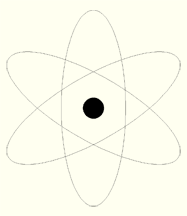Sea weed expert (& biologist) Ryan Drum writes about this essential nutrient:
"About a half billion years ago early chordates (the vertebrates and animals with a notochord) decided to use Iodine127 for their respective thyroid hormones. This decision to use stable Iodine 127 as the definitive element in regulatory hormones is probably a significant factor in Chordata survival and success.
Chordates developed in the oceans where Iodine 127 was always available. Once chordates moved onto land, their iodine requirement became problematical. Land animals must derive their iodine from food and water. Fresh water often has less iodine than seawater. Unlike seaweeds, land plants seem to have no requirement for iodine and thus accumulate very little iodine.
Over time, most land animals developed efficient Iodine 127 extraction and storage mechanisms, becoming innately iodine-conservative with iodine reserves stored in thyroid glands and secondarily as circulating iodinated hormones bound to blood globulins. The absolute stability of Iodine 127 favored reliable longterm storage.
 Prior to the 1940’s, there was no biologically available Iodine 131. This means that prior to the development of nuclear devices and facilities, animals had no prior experience with unstable Iodine 131 and probably no special protective mechanisms.
Prior to the 1940’s, there was no biologically available Iodine 131. This means that prior to the development of nuclear devices and facilities, animals had no prior experience with unstable Iodine 131 and probably no special protective mechanisms.
Are animals at risk for Iodine 131 uptake and subsequent radiation damage? Yes and no. Amazingly, animals can detect the atomic weight differences between the lighter stable Iodine 127 and the heavier unstable Iodine131. But, this is apparently the only detectable difference between the two iodine forms. Because of their innate iodine conservation mechanisms, iodine-dependent animals will readily take up radioactive, heavier Iodine 131 if they are deficient in Iodine 127. The Iodine 131 is placed in molecules, cells and tissues where iodine is needed, just as if it were Iodine127. The safety factor is: ANIMALS WITH COMPLETE BODY COMPLEMENT OF IODINE127 TEND TO NOT TAKE IN RADIOACTIVE IODINE131."
-- So, our task, if we wish to take it, is to be certain we have a 'complete body complement of Iodine 127!
Eating Sea veggies is one of the easiest ways to get that complement of Iodine 127. In 'Seed of Life Nutrition, Summer writes: "Bladderwrack, wakame, kombu and dulse have the highest iodine levels and therefore the most protective properties. Sea palm is good, as well. Nori isn’t known for having the highest levels of iodine, so in this instance wouldn’t be my first recommendation unless it is the only kind of seaweed someone likes or tolerates. For kelp powder 1-3 grams per day is a maintenance dose."
I use a piece of kombu when cooking beans or soups, (usually cut into smaller pieces, so it's easy to eat), & love to munch on wakame. I enjoy finding kelp powder that's not too granular, & sprinkle it on most anything I'd use salt on. Tuesdays I swim with my 6 year old granddaughter, & since the pool water is chlorinated, I take an iodine capsule. (chlorine, bromide & fluorine are in the same halogen group, & displace iodide 127!)
In my mid 20s, I developed pre-menstrual breast tenderness, & after reading one of Dr Jon Wright's articles, began taking a few drops of Lugol's Solution, & within a couple of months, that was no longer an issue. Dr Jarvis writes in his books on (Vermont) Folk Medicine that Lugol's Solution added to apple cider vinegar would reverse mastitis in the Dairy Cattle, & a few drops with a couple of tsp. vinegar in a glass of water would 'Calm the Race Horse type child!' Interestingly, he also recommends against wheat, (along with white sugar, etc) & comments that the folks in Vermont do better eating corn! hmm -
Dr. Jarvis was quite interested in the need for iodine, & the effects of consuming/esposure to other members of the same Halogen group:
Relative
Halogen Atomic Weight
Fluorine 19.
Chlorine 35.5
Bromine 80.
Iodine 127.
As always, remember I'm a massage therapist, & while interested in nutrition & well being for most of my life, am not a doctor. I encourage you to do your own research!









No comments:
Post a Comment